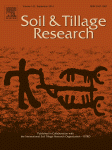Ver ítem
- xmlui.general.dspace_homeCentros e Institutos de InvestigaciónCIRN. Centro de Investigaciones de Recursos NaturalesInstituto de SuelosArtículos científicosxmlui.ArtifactBrowser.ItemViewer.trail
- Inicio
- Centros e Institutos de Investigación
- CIRN. Centro de Investigaciones de Recursos Naturales
- Instituto de Suelos
- Artículos científicos
- Ver ítem
Roots are the key for soil C restoration: A comparison of land management in the semiarid Argentinean Pampa
Resumen
The objective of the study was to elucidate the relationship between soil management and carbon (C) stocks, and to identify the factors that intervene in the processes that favor C sequestration. The study was carried out on a farm in the Argentinean semiarid pampas with four land management practices (2019–2021): natural grassland (NG), crop-pasture rotation (RO), soybean monoculture (S-S) and with cover crop (S-CC). Aerial and root biomass were
[ver mas...]
The objective of the study was to elucidate the relationship between soil management and carbon (C) stocks, and to identify the factors that intervene in the processes that favor C sequestration. The study was carried out on a farm in the Argentinean semiarid pampas with four land management practices (2019–2021): natural grassland (NG), crop-pasture rotation (RO), soybean monoculture (S-S) and with cover crop (S-CC). Aerial and root biomass were quantified at cover crop termination and soybean flowering. In addition, residues on soil surface were determined two times a year. In all cases, C and N contents were quantified. On composite soil samples, soil organic C (SOC), particulate C (POC), microbial biomass C and N (MBC, MBN), and soluble C and N were determined at 0–0.1 m depth. Results showed that NG had the highest and the most stable aboveground (3807.1 kg residue-C ha-1) and belowground inputs between years (4965.8 kg root-C ha-1). Similar results were observed in RO treatment during the first year (4221.0 kg root-C ha-1) diminishing by 67% after plowing for the annual crop in the second year reaching similar root-C values than S-CC and S-S (721.7 kg ha-1). S-S presented the lowest aboveground (49%) and belowground inputs (77%) compared to NG. Cover crops (S-CC) contributed with 31% and 14% of extra residue-C and root-C, respectively, compared to S-S. MBC showed a non-linear response with increases in root-C, reaching maximum carrying capacity of 110.6 ± 4.3 kg MBC ha-1 with root-C inputs ≥ 2200 kg ha-1. Our results showed significant relationships between root-C and POC and SOC, while no relationships were found for aboveground residues. Increases in soluble N explained 86% of SOC variability. Both RO and S-CC reached the “4 per Mille” goal with an average annual SOC storage rate (ΔC) of 0.24 and 0.16 Mg ha-1 y-1, respectively, while S-S had SOC losses of 0.04 Mg ha-1yr-1.
[Cerrar]

Autor
Frasier, Ileana;
Barbero, Florencia Magali;
Perez Brandan, Carolina;
Gómez, María Florencia;
Fernandez, Romina;
Quiroga, Alberto Raul;
Posse Beaulieu, Gabriela;
Restovich, Silvina Beatriz;
Meriles, José Manuel;
Serri, Dannae Lilia;
Figuerola, Eva Lucia Margarita;
Noellemeyer, Elke;
Vargas Gil, Silvina;
Fuente
Soil & Tillage Research 235 : 105918. (January 2024)
Fecha
2024-01-01
Editorial
Elsevier
ISSN
0167-1987
Documentos Relacionados
Formato
pdf
Tipo de documento
artículo
Proyectos
(ver más)
INTA/2019-PD-E3-I062-001, Estrategias de producción que incrementen el secuestro de C en suelo para la mitigación del Cambio Climático
INTA/2019-PD-E3-I058-001, Emisiones (GEI) en los sistemas agropecuarios y forestales. Medidas de mitigación
Palabras Claves
Derechos de acceso
Restringido
 Excepto donde se diga explicitamente, este item se publica bajo la siguiente descripción: Creative Commons Attribution-NonCommercial-ShareAlike 2.5 Unported (CC BY-NC-SA 2.5)
Excepto donde se diga explicitamente, este item se publica bajo la siguiente descripción: Creative Commons Attribution-NonCommercial-ShareAlike 2.5 Unported (CC BY-NC-SA 2.5)


